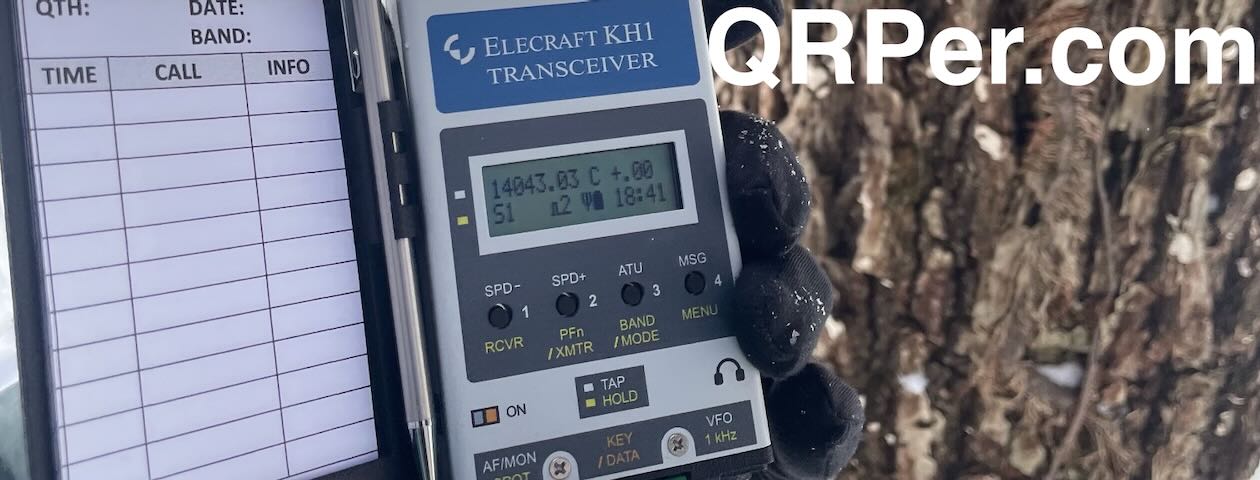 At some point during my Canada travels this summer, I realized I had been using the Elecraft KX2 quite heavily. If you’ve been following my recent field reports, you’ve no doubt seen a lot of the KX2.
At some point during my Canada travels this summer, I realized I had been using the Elecraft KX2 quite heavily. If you’ve been following my recent field reports, you’ve no doubt seen a lot of the KX2.
This was never intentional–it’s just how it played out.
Why the KX2 in heavy rotation?
 For starters, I only brought two general coverage radios with me to Canada: the KX2 and the Discovery TX-500. I also tucked away my KX1 and MTR-3B (hidden under the floor of my boot/trunk space), but band conditions were so incredibly poor most days, I liked the option of a QRP “full gallon” (ie. 5 watts+) for activations. The KX2 and TX-500 can push up to 10 watts when needed.
For starters, I only brought two general coverage radios with me to Canada: the KX2 and the Discovery TX-500. I also tucked away my KX1 and MTR-3B (hidden under the floor of my boot/trunk space), but band conditions were so incredibly poor most days, I liked the option of a QRP “full gallon” (ie. 5 watts+) for activations. The KX2 and TX-500 can push up to 10 watts when needed.
The KX2 tends to be the radio I reach for when I don’t know what to expect at a park. Most parks I activated in Québec were firsts for me so I liked having my most versatile radio option on hand.
Since the KX2 has a built-in ATU, battery pack, and even an internal mic; it’s so self-contained, I pretty much take it everywhere.

The KX2 is also one of the most compact radios I own–so compact, in fact, it fits on a small folding knee board my friend Carolanne (N0RNM) made (see in photo above and read more about the design in her guest post). With this kneeboard, I’ve no need of a table: just strap the board to my leg, add radio & log book, and I’m good to go!
Whereas I feel like the KX2 is a Swiss Army Knife of a radio, the TX-500 feels more like a tactical radio–ready for any changing weather environment. The TX-500 is water resistant, weather/dust sealed, and insanely rugged. It’s also the most efficient general coverage QRP radio I own, needing only 100-110 mA in receive.
The TX-500 is water resistant, weather/dust sealed, and insanely rugged. It’s also the most efficient general coverage QRP radio I own, needing only 100-110 mA in receive.
The TX-500 is super portable and I tend to reach for it when weather conditions are uncertain. In a way, I often don’t think about it when there’s good weather. Odd, but true!
It’s a wee bit too wide for my current knee board, but (hint) if you own a TX-500, hang tight. There may be a knee board in your future.
All that said, the big reason I didn’t take the TX-500 to the field a lot is because it served as my “home base” transceiver at our rental condo in Québec. I had it set up for hunting POTA and SOTA activators and making casual contacts. The TX-500 sat on a table next to the deck at the condo and was hooked up to the CHA MPAS Lite most of the time; the KX2 stayed packed away for POTA/SOTA.
TX-500 field time!
 On July 18, 2022, I grabbed the TX-500 from the table and packed it in my field radio backpack.
On July 18, 2022, I grabbed the TX-500 from the table and packed it in my field radio backpack.
My wife and daughters were up for a trip to Québec City, so I picked out a park in the Sainte-Foy part of town.
There are many POTA parks in Sainte-Foy (indeed, I already activated four of them) but the one that immediately came to mind was one of the few I’d explored previously in Québec: Base de plein air Sainte-Foy.
In 2017 and 2018, I joined the Club Radio Amateur de Québec (CRAQ) at the Base de plein air Sainte-Foy for the ARRL’s Field Day. I knew it was a pretty expansive park with a nice lake and beach. It looked pretty welcoming in the summer, but I imagine the park gets even more visitors in the winter for skating, cross-country skiing and sledding.
I was very surprised to discover that Base de plein air Ste-Foy was also a POTA ATNO. No doubt, there had been plenty of radio activity on-site int he past, but no POTA activations.




































